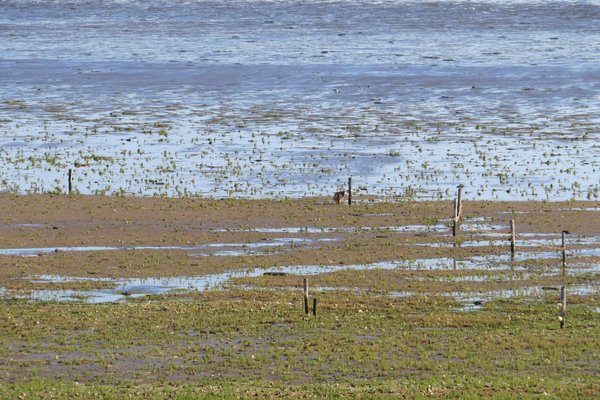Denmark, Germany, Netherlands
Wadden Sea
The Wadden Sea is a shallow body of water with tidal flats and wetlands, rich in biological diversity
The area is typified by extensive tidal mud flats, deeper tidal creeks, and transitional zones between the sea, the freshwater environment, and the surrounding (is)lands. Its coastal wetlands are considered one of the most important areas for migratory birds in the world, with an average of 10-12 million passing through them each year.
Community Perspective: the site comprises 7 components and different national parks (the bigger islands mostly aren’t included). Reviews are available for places in the Netherlands (John, Clyde, Chris, Els, Bernard), Germany (John, Ian, Michael, Nan) and Denmark (John). The ‘proper’ way of exploring the Wadden is via a mud hike like the ones Kbecq, Assif and Nan reported on.
Site Info
Official Information
- Full Name
- The Wadden Sea (ID: 1314)
- Countries
- Denmark Germany Netherlands
- Status
-
Inscribed 2009
Site history
History of Wadden Sea
- 2014: Extended
- To include Danish Wadden Sea as well as maritime extensions of Dutch and German areas
- 2011: Boundary change
- To include the Hamburg Wadden Sea National Park
- 2009: Inscribed
- Inscribed
- 1989: Requested by State Party to not be examined
- Germany: only the Lower Saxony part of the NP
- Type
- Natural
- Criteria
- viii
- ix
- x
Links
- UNESCO
- whc.unesco.org
- Official
-
- nationalpark-wattenmeer.de — Website of the three German Waddensea National Parks
- waddensea-worldheritage.org — Wadden Sea World Heritage
- Related
-
- waddensea-secretariat.org — Wadden Sea World Heritage Nomination website
All Links
UNESCO.org
- whc.unesco.org — whc.unesco.org/
Official Website
- nationalpark-wattenmeer.de — Website of the three German Waddensea National Parks
- waddensea-worldheritage.org — Wadden Sea World Heritage
Related Resources
- waddensea-secretariat.org — Wadden Sea World Heritage Nomination website
News Article
- July 29, 2023 apnews.com — A car-carrying cargo ship burning near a Dutch bird habitat stokes environmental worries
- Oct. 14, 2021 ndr.de — Law to prohibit drilling for oil and gas in National Park Wadden Sea Niedersachsen
- Aug. 13, 2021 archpaper.com — Marsk Tower opens at Wadden Sea National Park in Denmark
- Dec. 21, 2016 ndr.de — No oil exploration in German part of Wadden Sea
- Oct. 18, 2014 waddensea-secretariat.org — Increased seal mortality in Denmark and Schleswig-Holstein since September
- June 27, 2013 waddensea-worldheritage.org — First Wadden Sea World Heritage highway traffic sign
- June 28, 2011 dw-world.de — Hamburg Wadden Sea park declared UNESCO heritage site
Community Information
- Community Category
- Natural landscape: Marine and Coastal
Travel Information
Transboundary sites
Amsterdam hotspot
Recent Connections
-
Mudflats
"the largest unbroken system of interti… -
Eagles
"a small and increasing breeding popula… -
Estuary
"It is a large, temperate, relatively f…
Connections of Wadden Sea
- Individual People
-
-
Sir Robert Holmes
"Holmes's Bonfire was a raid on the Vlie estuary in the Netherlands ..... during the 2nd Anglo-Dutch war on 19 and 20 August 1666. The attack, named after the commander of the landing force, Rear-Admiral Robert Holmes, was successful in destroying by fire a large merchant fleet of 140 ships." (Wiki) The Dutch fleet was anchored in Vlieree ("Vlie Roads") which is within the boundaries of the Wadden See site -
Hendrick Hamel
Hamel set out on his journey to the Far East from Texel, part of the Islands in the Wadden Sea
-
- Geography
-
-
Disputed territories
Disputed area in the Ems-Dollard Estuary between Netherlands and Germany (left out of the WHS core zone): the Dutch believe that the border runs through the geographical centre of the estuary, whereas the Germans claim it runs through the deepest channel (which is close to the Dutch coast). As the parties are friendly states with an open border, the argument goes no further than an agreement to disagree (wiki) -
Archipelagos
(Deposition) "The Frisian Islands, also known as the Wadden Islands or Wadden Sea Islands, form an archipelago at the eastern edge of the North Sea" (Wiki). Some parts of some of the islands are within the inscribed area though the biggest/most developed are excluded. -
North Sea
-
Located at an 'extreme point' of Latitude or Longitude
Rottumerplaat is the northernmost point of the Netherlands -
Marine sites
-
Estuary
"It is a large, temperate, relatively flat coastal wetland environment, formed by the intricate interactions between physical and biological factors that have given rise to a multitude of transitional habitats with tidal channels, sandy shoals, sea-grass meadows, mussel beds, sandbars, mudflats, salt marshes, estuaries, beaches and dunes." (Official description)
-
- Trivia
-
-
Nudist beaches
-
Situated in an administrative exclave of a city
The Hamburg Wadden See NP is administratively part of Hamburg even though it is situated 1,5kms off Cuxhaven in the estuary of the Elbe andd the North Sea. SeeSee en.wikipedia.org
-
Depicted in Mizielinska Maps
Marshland (Denmark); Birds and mudflat walking (Netherlands); Seal, Redshank (Germany)See i.pinimg.com
-
Google Doodles
30 June 2021, Celebrating the Wadden SeaSee www.google.com
-
- Ecology
-
-
Dunes
Coastal dunes -
Eagles
"a small and increasing breeding population of white-tailed eagles" (wiki) -
Tidal effects
Complex tide-dominated barrier coast (not deltaic). (AB) -
Seals
grey seal, harbour seal -
Mudflats
"the largest unbroken system of intertidal sand and mud flats in the world" (OUV) -
Swamps and Marshes
"The salt marshes host around 2,300 species of flora and fauna" (OUV) -
Bird Migrations
OUV: The property is the essential stopover that enables the functioning of the East Atlantic and African-Eurasian migratory flyways. -
Molluscs
"a multitude of transitional habitats with tidal channels, sandy shoals, sea-grass meadows, mussel beds"
-
- Damaged
-
-
Threatened by Oil and Gas Exploration
"No new exploitation installations for oil and gas are permitted in the World Heritage site. One existing installation, the Mittelplate, was excised from the site, as well as a gas exploitation area in the Netherlands. .. Subsidence as a result of gas extraction in the Dutch part of the Wadden Sea is causing impacts, with a maximum of 42cm subsidence reported in 2015 underneath Ameland island." (IUCN Outlook 2020)
-
- World Heritage Process
-
-
WHS with enclave
The inscribed boundary extends into the sea beyond the East and North Friesian Islands. In the East most of the islands are partially, and in the North others such as Sylt, Amrum and Fohr are totally excludedSee whc.unesco.org
-
Minor modifications after inscription
2011 boundary change to include the Hamburg Wadden Sea National Park -
Natural sites filling gaps cited by IUCN
European saline wetlands -
Transboundary sites
3 countries (Netherlands, Germany, Denmark) - only the German-Danish part seems truly contiguous -
Extended from original TWHS
From only the Lower Saxony part of the NP in Germany (1989) -
Ten years or more to inscribe
1989 - 2009 -
Country gained extra WHS by an extension
2012 Denmark -
Extended
2014: To include Danish Wadden Sea as well as maritime extensions of Dutch and German areas
-
- Human Activity
-
-
Amber
The Island of Neuwerk has an amber museum and a visitors' activity is searching for Amber torn up from the sea bed by storm surges. -
Artificial Islands
Nigehörn, part of the Hamburg Wadden Sea National Park was constructed in 1989See en.wikipedia.org
-
- Constructions
-
-
Unfinished constructions
unfinished dam to Ameland (1872)See www.ameland.net
-
Lighthouses
In the Hamburg Wadden Sea NP - on the island of Neuwerk - "The lighthouse existing today was built between 1367 and 1369 after a fire destroyed the earlier one. It is Hamburg's oldest existing building as well as Hamburg's last fortification" (it is 120 kms from Hamburg but is an administrative exclave!) - served as a lighthouse from 1814-2014See en.wikipedia.org
-
- WHS on Other Lists
-
-
PSSA
-
Ramsar Wetlands
-
Natura 2000
Duinen van Texel Nationaal ParkSee www.natura.org
-
- Timeline
-
-
Holocene
The Wadden Sea has evolved over the last 8,000 years being a very young ecosystem in geomorphological and evolutionary terms (nom file)
-
- WHS Hotspots
-
-
Amsterdam hotspot
Den Helder is 1h15 by train from Amsterdam Central Station - the core zone of the Wadden Sea WHS starts at its harbour -
Hamburg Hotspot
-
- Visiting conditions
News
- apnews.com 07/29/2023
- A car-carrying cargo ship burning …
- ndr.de 10/14/2021
- Law to prohibit drilling for oil a…
- archpaper.com 08/13/2021
- Marsk Tower opens at Wadden Sea Na…
Recent Visitors
Visitors of Wadden Sea
- Adrian Turtschi
- Albert
- Alexander Barabanov
- Alexander Lehmann
- Ali Zingstra
- A. Mehmet Haksever
- Ammon Watkins
- Ana Lozano
- Anna Wludarska
- anthonybonbon
- Antonio J.
- Argo
- ArnaudFilloux
- Artur Anuszewski
- AS
- Ask Gudmundsen
- Assif
- Atila Ege
- Aunti
- Avery MC
- awestix
- Bamse
- basementonline
- BaziFettehenne
- Bernard Joseph Esposo Guerrero
- Bill Maurmann
- Bin
- Birgitte Sørensen
- BMuramatsu
- BobSmithseestheworld
- Bodil Ankerly
- Bram de Bruin
- Brendan Carroll
- Bropyk
- Can SARICA
- Cezar Grozavu
- chenqtao
- Cheryl
- Chole Ross
- ChrisDorn
- Christian Wagner
- Christine
- christof
- Christoph
- Christravelblog
- Claire Bradshaw
- Cluckily
- Clyde
- Colossus
- Coppi
- Corinne Vail
- Cristina Erba
- Csaba Nováczky
- ctravel
- CugelVance
- Dagmara
- Dani Cyr
- Daniela Hohmann
- Daniel Chazad
- Daniel Gabi
- David Berlanda
- DavidS
- Deanshotgun92
- Dimitar Krastev
- Dimitrios Polychronopoulos
- Dirk-pieter
- DjhMck
- Dolemite92
- Dorejd
- Dr. Caligari
- DutchHorn
- Dwight Zehuan Xiao
- Echwel
- edstar500
- Elf21
- Ellen Nielsen
- Els Slots
- Enid MC
- erdsaumnaht
- Erfe91
- Erik Jelinek
- Errol Neo
- Eva Kisgyorgy
- Evgenii
- fabi-ddorf
- Fan Yibo
- Farinelli
- Federico P.
- Feldhase
- Felicité
- Femke Roos
- Fernweh
- Filip Murlak
- FK
- Flexiear
- Francky D'Hoop
- Frederik Dawson
- frizzle
- FS
- Galgalula
- Gary Arndt
- Geert Luiken
- g.emma_bae
- George Gdanski
- GeorgeIng61
- Gernot
- grimloch
- Hadrianus
- Hammeel
- Harald T.
- Harry Mitsidis
- henrik_hannfors
- heywhatever2
- hszaby
- Hubert
- Iain Jackson
- Ian Cade
- Ilya Burlak
- Ingemar Eriksson
- Ingrid
- Ivan Rucek
- Jacob Otten
- Jakob F.
- Jakubmarin
- janem
- Janina Lehmann
- Janos
- Jan-Willem
- Jan Zimmermann
- Jarek Pokrzywnicki
- Jasam
- Javier Coro
- Jay T
- Jean Lecaillon
- Jeanne OGrady
- Jens
- Jesse S 2010
- JessicaDS
- Jezza
- Joebobs
- Joel on the Road
- John Smaranda
- Jonas Hagung
- Jonas Kremer
- Jonas Martinsson
- Jon Eshuijs
- jonstst
- JoshHad
- JoStof
- Joyce van Soest
- KarenBMoore
- Karito Vies
- Kasia M.
- Kbecq
- Kerstin Lange
- Kevin Padley-Knight
- Kjlauer
- Klara Woodson
- Knut
- Krijn
- Kristin
- krtek
- Kurt Lauer
- kutasp
- Lara Adler
- Liamps91
- lichia
- Lisu Marian
- Lithobates
- Loic Pedras
- Luboang
- Lucio
- Luis Filipe Gaspar
- Lukasz Palczewski
- Maciej Gil
- Maciej Gowin
- Mahuhe
- Maja
- Małgosia Łupicka
- MarcoB_0
- Marcobrey
- marc Rouserez
- Marlies van Wolfswinkel
- Martin
- Martina Rúčková
- Marty
- MaxHeAnouBen
- MaYumin
- MH
- Michaela0705
- michaelsballard
- Michael Turtle
- Mikko
- Mikko Syrjä
- miri2808
- MMM
- Mohboh
- Monica Tasciotti
- MoPython
- Mozzer76
- MWaters66
- Nafis N
- nan
- Nasebaer
- NH1984
- Nick Kuzmyak
- Nicole Lampos
- Nihal Ege
- Olli-Pekka Turunen
- PabloNorte
- Patrik
- Paul Schofield
- Peltzi
- PeterA
- PeterH
- Peter Lööv
- Philipp Leu
- Philipp Peterer
- Pieter Dijkshoorn
- pietprive06@kpnmail.nl
- Piotr Wasil
- Potsdamer
- preunesco
- Rachel Perkins
- Rafał Kałczuga
- Ralf Regele
- Ralf Rotheimer
- Randi Thomsen
- ReallyDeepThoughts
- Reiseblitz
- Remski
- Reza
- Rick Ohm
- RobRos
- Rodinia
- Roel Sterken
- Roger Enarsson
- Roger Ourset
- Roman Bruehwiler
- Roman Raab
- Ronbon
- Rudegirl
- Sabrina Liebehentschel
- sandersx2
- Sandmann15
- Sandra!
- Schnitzel
- Sebasfhb
- Sehnsuchtsbummler
- serghei.belous
- Sergio Arjona
- Shandos Cleaver
- shoaibmnagi
- Simonh
- SirLoydd
- sncjob
- Solivagant
- Squiffy
- Stanislaw Warwas
- Stefan Loov
- stephanvermeulen
- Stijn
- Svein Elias
- Szabolcs Mosonyi
- Szucs Tamas
- Tamara Ratz
- Taotao Chen
- Tarquinio_Superbo
- Tatiana Nikulnikova
- Thomas Buechler
- Thomas van der Walt
- Thorben
- Timonator
- Tinuszke
- Tom Flaten
- Tommy W
- tony0001
- triath
- Truls Brekke
- Tsunami
- usagi1974
- Vanessa Buechler
- Van Hung
- VB73
- Veronica
- VLabhard
- voyager
- WalGra
- Waters88
- WILLIAM RICH
- Wimmy
- Wojciech Fedoruk
- Wo_ko
- YaroMir
- Yevhen Ivanovych
- Zach
- Zhenjun Liu
- Zoë Sheng
Community Reviews
Show full reviews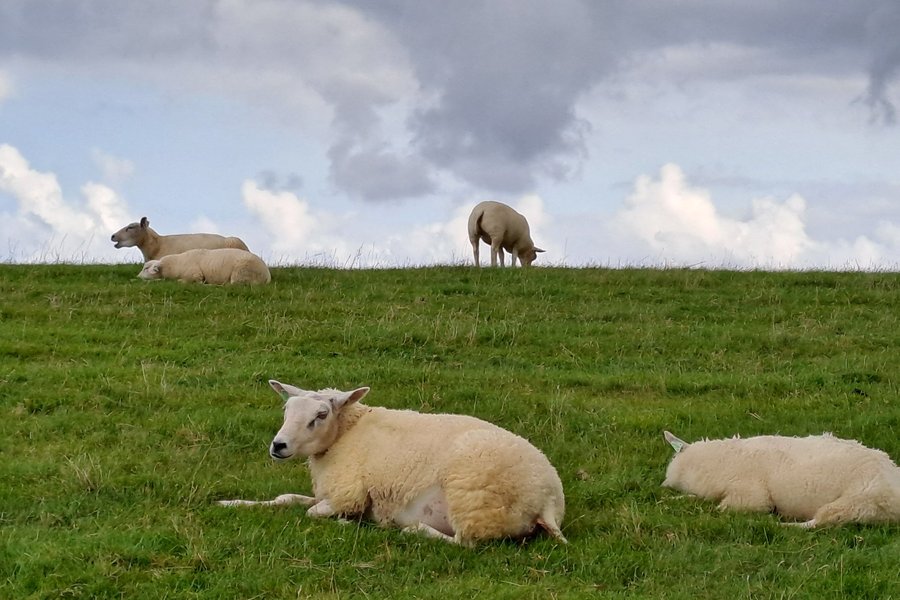
How can you not love the WHS Wadden Sea? First attempt to dip your toes into the Wadden Sea in August 2024, return in October 2024.
The destination of the first trip was the island of Ameland, Friesland, The Netherlands. To get there, you have to take a ferry from Holwerd, which we hadn't booked. Be careful, the price is expensive for a mobile home, but it is possible to leave it in the parking lot at the pier. And we crossed the Wadden Sea to the island where we stayed for 2 days at a very nice little farm campsite.
We had fixed our bikes to the back of Wilson so we could cycle around the island to Het Oerd nature reserve, which is included in the WHS area. It is possible to enter the reserve on foot by following the Wadden Sea from an observatory. There is also a huge beach to the northwest of this observatory overlooking the North Sea, which is very impressive when the tide is low, as the water is so far out on the horizon. There was a warden there, so we thought that when the tide is in, you'd better be able to run well! We saw quite a few birds both on the banks and in the meadows of the island, to our great delight.
This excursion will undoubtedly remain in your memory for a long time: the colors of the vegetation, the sky, the passing clouds and the showers, the …
Keep reading 3 comments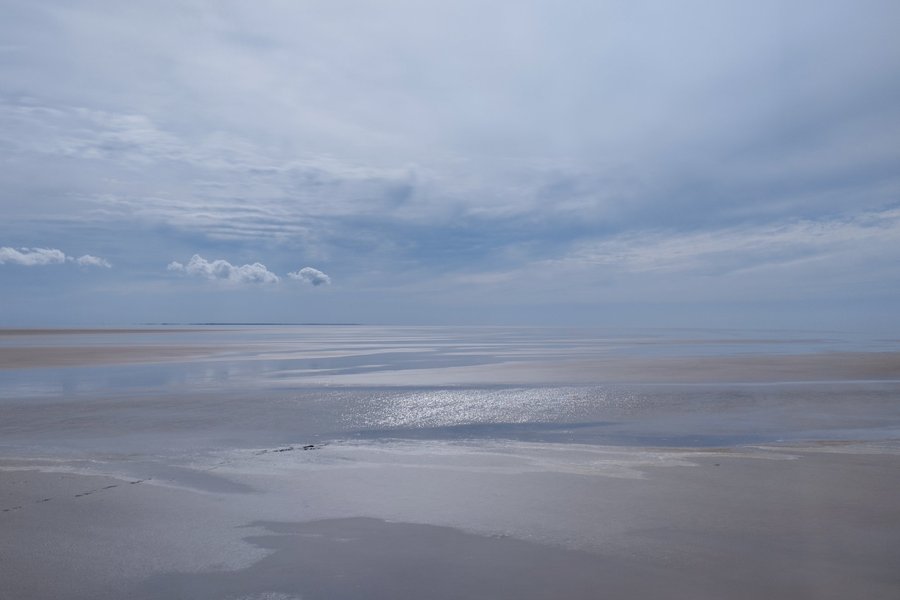
The sand glistened like mercury ahead of me, wet and silver. Mussel and razor clam shells crunched beneath my feet as I walked, following a line of gull footprints, the only tracks in an otherwise trackless expanse. Rivulets of water still flowed out to the west, to the visible blue that marked the edge of the North Sea. In the other direction a far-distant, darker, fringe of land seemed to shimmer like a mirage across the sand. And behind me stood the bus from which I had just disembarked, twenty minutes off shore.
If you type in ‘Koresand’ on Google Maps, it finds the location perfectly, but just shows it as an uninterrupted patch of blue sea south west of the Danish island of Mandø. I feel that the maps used on this website do me a bit dirty by more accurately showing what looks to be a patch of sand, with even a couple of tracks making their way onto it. This was where I was.
The Danish section of the Wadden Sea has been rather under-discussed here compared to the original Dutch and German sections which is rather a surprise as it can be accessed very easily. The entire western coast of Jutland from south of Esbjerg down to the German border falls within the Wadden Sea National Park (Nationalpark Vadehavet). And a visitor’s centre, the Vadehavscentret, sits just outside the village of Vester Vedsted, less than 20 minutes drive south west of the pretty …
Keep reading 0 comments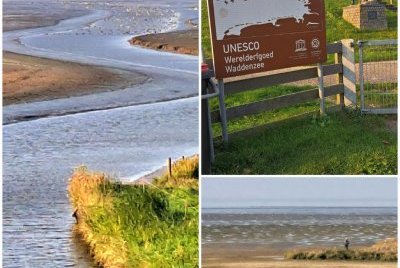
After visiting the lovely old town of Franeker for the Eisinga Planetarium, my friend and I went back to Leeuwarden to embark on what was probably the craziest bike ride I have done so far. In the end, we cycled nearly 50-kms in total -- yes, on the regular thin-wheeled Dutch bike one can rent out at the stations-- to get to Zwarte Haan and back. I'm not sure if there could have been buses to get us there and back, but we never encountered any on the way. Also, I found the bike journey across rural Friesland rather enjoyable, something I never experienced in the more modern corners of the country. The journey was probably even more memorable than the destination itself, which in this case was the Wadden Sea. Upon reaching the seaside village, we had to climb the verdant dike that is dotted with sheep to finally set foot in the Wadden Sea. From the top on the dike, one can go to a viewing platform right in front of the HG Miedema Pumping Station to have a higher vantage point in appreciating the open views of the sea and the polder behind it. One can also move forward passing the tall grass, and get closer to explore the vast mudflats. On our visit, there was only one person there who was armed with long camera lenses, taking close-up shots of birds. We did not get too deep so as not to disturb the animals.
Given …
Keep reading 0 comments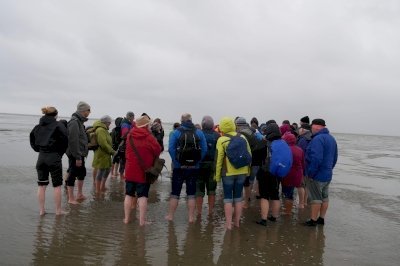
The Wadden Sea is probably the first WHS I visited (disregarding its inscription year). My grandfather was from Sylt, Germany's northernmost island, part of the North Frisian Islands and surrounded by the Wattenmeer Nationalpark. We would go once a year to visit relatives of my father's when I was little. When we crossed the Hindenburg Damm to get onto the island we were crossing right through the national park.
Growing up in Schleswig Holstein meant that the Wadden Sea featured prominently in any vacation or weekend excursion plans. Be it a daytrip to the beach in St. Peter-Ording, the nicest mainland beach in Schleswig Holstein, a cruise to Helgoland from Büsum, or spending repeated summer vacations as an adolescence in the Fünf Städte Heim in Hörnum, Sylt.
What makes the Wadden Sea so interesting is that there are few places in the world where you will experience the magnitude of the tides so directly. Paths between islands and to the mainland open up twice a day and get swallowed up a few hours later, rivers (Prils) appear and disappear. And the wildlife, most notably birds, capture the mudflats.
In addition, the Wadden Sea faces the rough North Sea with high dikes lining the shore lines and land won and lost over millennia. While not part of the site, the Frisian Houses, the Halligs, ... all the ways the locals adapted to the dangerous North Sea and transformed the landscape, are amazing to see. Personally, I feel this …
Keep reading 0 comments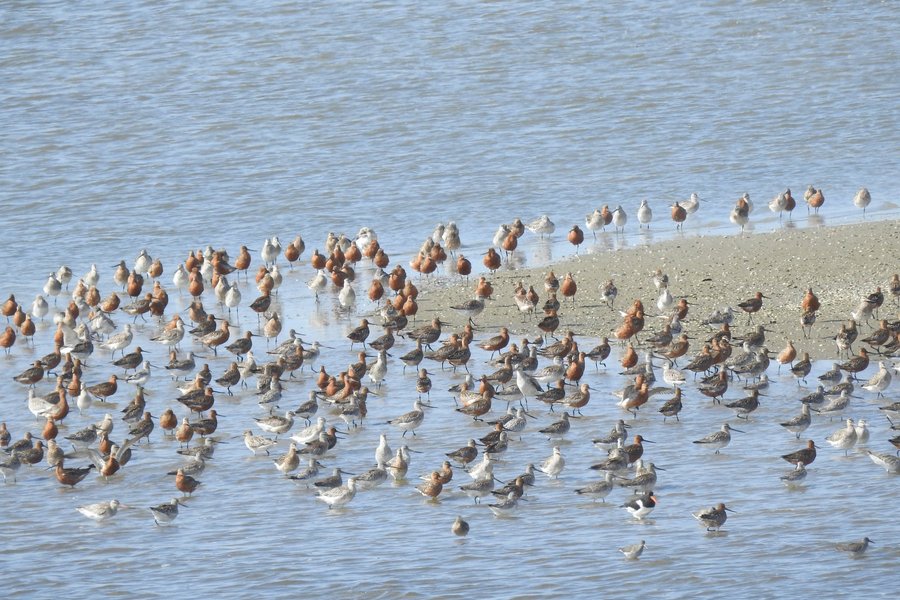
I think that in order to appreciate the Wadden Sea you have to go on a mudflat hike. Living in Hamburg, I have been to several ones, and I always find this weird ecosystem fascinating. Coming from Hamburg you can reach the Northern Sea at Dünen/Cuxhaven in Lower Saxony or at Friedrichskoog/Büsum/Sankt Peter in Schleswig Holstein. I have been to mudflat hikes at all these points and, surprisingly enough, the landscape and the nature of the hike differ considerably. One of the reasons is a feature of the Wadden Sea called tidal creeks (Priele in German). These are streams which appear during low water and can be very strong. Their route remains steady. If you go hiking next to such a tidal creek you cannot normally cross it. This affects the distance you can reach from the beach. This is why a mudflat walk from Büsum, for example, cannot take you to the deep sea. The terrain is also different, with mud of various degrees of density. Finally, in some hikes you can reach areas in which you can observe seals. I personally preferred Cuxhaven as a point of departure. Hikes can take from 1 hour up to 6 hours. Make sure to either join a tour or take the necessary precautions as mudflat hikes can be dangerous.
Keep reading 0 comments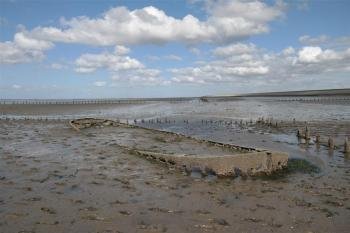
A couple of years ago we visited the German part of the Wadden Sea WHS with stops in Dorum (where you can have a look inside the Obereversand lighthouse) and Dornum (where you can make a walk along the Wadden Sea following the Heller path).
However, to get a proper feel of this WHS we decided to participate in a ‘wadloop’ (mud hike) in the Dutch part of the Wadden Sea WHS. There are various agencies offering such hikes using different routes. We opted for the one starting from the little village of Wierum to the Engelsmanplaat (Englishman sandbank) and back to Wierum.
In total it’s about 12 km which takes about 4 hours, a short break on the sandbank included. A guide is recommended (or even obligatory?) since the sea currents can be very dangerous.
The hike itself is quite exhausting as you are walking in the mud all the time and for a fair amount of time also knee/waist deep through the water. Nevertheless it’s a special sensation and in the future we might also try out other routes.
Keep reading 0 comments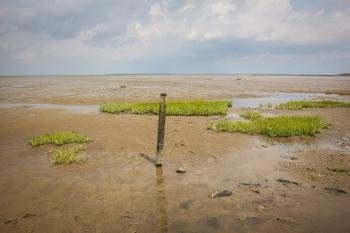
I spent some time exploring the German part of this WHS, particularly around the coastal town of Norden, which has good access to mudflats which you can go out and see for yourself.
There are the mudflats, of course, for those who want to see the importance of the region close up. For birdwatchers, the area around Norden and the Wadden Sea more generally provide viewpoints to see the millions of migrating birds that stop here to rest during their journeys.
The popular ‘Seehund Station’ is a centre near the coastline of Norden that rescues and looks after injured or orphaned seals. Experts nurse them back to health and then release them back into the sea when they are strong enough to look after themselves.
Although there is human development along the coastline, the most important areas of natural significance have been well protected for everyone to enjoy.
Keep reading 0 comments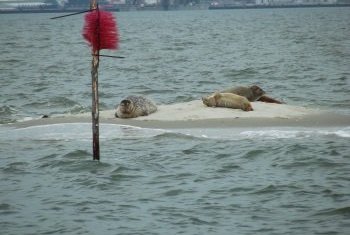
With the expansion of this WHS to unclude the area within the borders of Denmark, I decided to include a visit to this area whilst in the Kingdom.
Basing myself in the port city of Esbjerg I made journeys out to the off-shore islands of Romo and Fano.
To reach Romo I took a train to Skaerbaek,then a bus from there across a causeway to the island, and then to the southern end at Havneby. From here and from the causeway a variety of marine bird life could be seen.
Fano was reached by ferry from Esbjerg. A bus ran the length of the island from Nordby to Sonderho. Sonderho contained a number of examples of traditional domestic architecture, as well as bird life in the salt marshes. At Nordby I encountered the only mammals I saw; a family of seals basking on a sandbank.
Keep reading 0 comments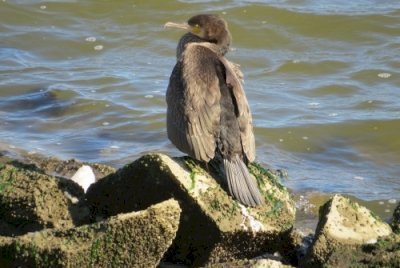
The Wadden Sea WHS covers a huge area along the coasts of the Netherlands, Germany and Denmark, so it’s an easy site to tick off. Getting a real feel for it though is a whole different story. I believe one should at least try to cover several different areas and take in both the marine and coastal aspects. In early August 2015 I made my third trip to the inscribed area, still searching for its soul.
My first visit was in 1982: I was 12 years old and went on a school trip to the Wadden island of Vlieland. It was the first time that I went away for a couple of days without my parents, not counting a disastrous girl scout camp that I left crying already after one night. Vlieland was more of a success, it’s a really popular holiday island geared to an active vacation. I still have some very funny pictures of that time. Although the islands are outside of the core zone of the WHS, you’ll inevitably cross the Wadden Sea by ferry. So technically – I had been there.
In 2011, on my way to the T-listed Eise Eisinga Planetarium in Franeker, I had driven the Afsluitdijk route. The Afsluitdijk is a major causeway damming off the former Zuiderzee and turning it into the freshwater lake of the IJsselmeer. It has been a candidate on its own for the Dutch Tentative List, but it was rejected because it isn’t a national monument …
Keep reading 0 comments
The Wadden Sea WHS area is large. One part in the North of the Netherlands especially around the Lauwersmeer above is the area of my roots. I visited it mid June 2015. I went for a tour on the Waddenzee on boat, bad weather so only tour. We did some walking on the mud flats, but it was high tide so we could not walk far. And we eat gurnard fish from the Waddenzee, durable fish! It's a great area and for this i ticked of the Dutch part, the Islands are not really part of it. Ah, we saw some seals too of course. Check my site for some photos.
www.christravelblog.com/netherlands-seals-in-need-and-lots-of-dirty-fun-at-the-waddenzee-near-lauwersmeer/
Keep reading 0 comments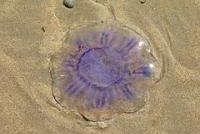
I visited this WHS in May 2012. I visited the Netherlands side of the Wadden Sea around the Frisian islands. The highlight of my visit was exploring the Wadden Sea coast of Texel by boat, spotting seals and a huge variety of birds on the way.
Keep reading 0 comments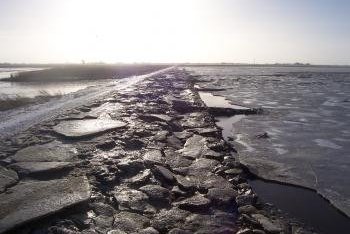
“I’m going to visit some mudflats!”
“Why?” my colleagues asked, as they seem to delight in eking out the weirder destinations that visiting World Heritage Sites takes me. Therefore they had great fun when I unveiled my plans for New Years day 2011.
“They are a World Heritage Site”
“Why?”
“erm...[googling]...they seem to be home to 6.1 million migratory birds”
“Wow, will you get to see them”
“erm, probably not, I don’t think mid winter is the main time for them.”
“OK, so which part of the National Park are you going to visit”
“I found a Lighthouse opposite the container port”
“Doesn’t sound to Natural why are you heading there?”
“It looks walkable from the ferry port at near Bremerhaven”
“Walkable, how far?”
“About 12km round trip, probably in the snow I guess”
“Wow you must really like birds”
“No, not really I don’t have much interest in them”
“...”
“I told you it is a World Heritage Site right?”
And so that is how I planned my day and that is how it turned out. To walk off the excesses of the festive period I took a stroll to Langlütjen I on New Year's Day 2011.
To my surprise there were a few birds flying around near the sea, I saw some Geese (Barnacle?) Ducks (Eiders?) and something that I think may have been a Curlew, but as I said, birds really are not a speciality of mine.
I actually enjoyed my walk through the flooded grass lands …
Keep reading 0 comments
This site covers almost 10,000 square kilometers, and stretches for 400km along the north coast of Europe from the Netherlands to the Danish border. To get an appreciation of this site I visited it at several diverse locations in the Netherlands and Germany:
Texel Island - reached by ferry from Den Helder, then by bus to Oudeschild, a small port facing the Wadden Sea. From here there are excursions by boat to see the wildlife on the sandbanks.
Terschelling Island - reached by ferry from Harlingen. From the port on the island I walked to Green Beach to see the bird life there, but saw more from the deck of the slow ferry on the way back to Harlingen.
Norddeich - from here there are ferries to Norderney and Juist Islands. I took an informative cruise to the National Park to see the seals and birds on the sandbanks adjacent both islands.
Wilhelmshaven - saw views over Jade Harbour from the Wattenmeerhaus, a museum of the fauna and flora of the Wadden Sea at South Beach.
Cuxhaven - I just timed it correctly to catch low tide at Dunen Beach in order to take a trip by horse and cart out onto the sandbanks. I also visited the National Park exhibition at Sahlenburg Beach.
Sylt Island - This island is accessible only by train or boat. I took the train to Westerland, then a bus to Hornum on the southern tip of the island. Then I took a boat cruise …
Keep reading 0 comments
